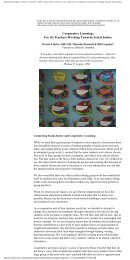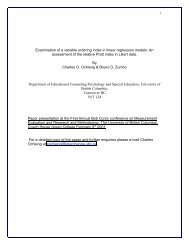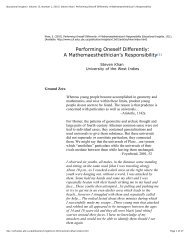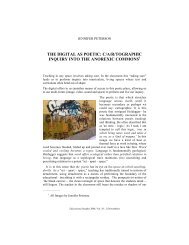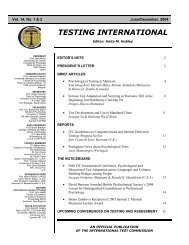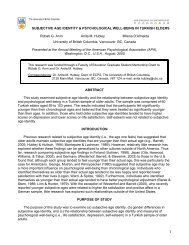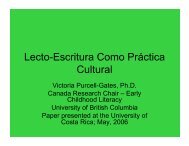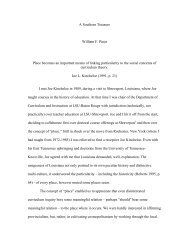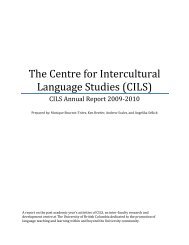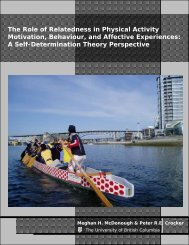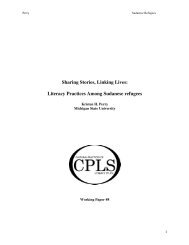Analyzing Literacy Practice - CPLS - University of British Columbia
Analyzing Literacy Practice - CPLS - University of British Columbia
Analyzing Literacy Practice - CPLS - University of British Columbia
Create successful ePaper yourself
Turn your PDF publications into a flip-book with our unique Google optimized e-Paper software.
_________________________________________________________________________<br />
_____<br />
Our Purpose codes, as stated previously, reflect the ways that particular literacy<br />
events mediated social activity within socio-cultural contexts. They document how people<br />
used literacy behavior to mediate their lives in the different case studies. To represent the<br />
interrelationships between function and purpose and to help us conceptually maintain this<br />
focus, we employed grammatical relationships within the token code names, themselves.<br />
Thus, we may have a person reading an application form to learn what information is<br />
needed (function) in order to apply for admission to college (Purpose). To always begins a<br />
Function code , and In order to always begins a Purpose code . While the codes are<br />
referred to as Function and Purpose, these are in fact shorthand for communicative function<br />
and social purpose. Following (Table 4) are some examples <strong>of</strong> our identified social<br />
purposes for which people used literacy across the <strong>CPLS</strong> case studies. The <strong>CPLS</strong> coding<br />
manual includes more than 300 different Purpose codes, reflecting the multitude <strong>of</strong> ways<br />
that literacy mediates social activity around the world.




